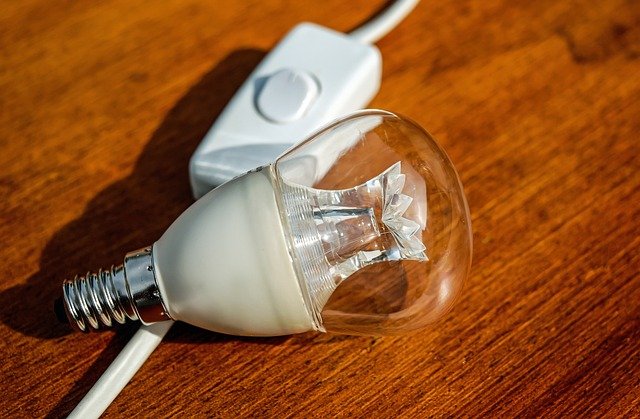Understanding Electricity and Gas: Your Home Energy Essentials
Electricity and gas are the lifeblood of modern homes, powering our appliances, heating our spaces, and illuminating our lives. As essential utilities, they play a crucial role in our daily comfort and productivity. However, managing these energy sources efficiently can be challenging for many homeowners. This article delves into the fundamentals of electricity and gas usage in residential settings, offering insights on how to optimize consumption, reduce bills, and make informed choices about energy providers.

The amount of electricity an appliance consumes is measured in kilowatt-hours (kWh). High-energy appliances like air conditioners and electric water heaters tend to use more electricity, significantly impacting your energy bills. Understanding the energy consumption of different appliances can help you make more informed decisions about their usage and potential replacements with more energy-efficient models.
What role does natural gas play in home energy?
Natural gas is a versatile fuel source commonly used in homes for heating, cooking, and water heating. It’s delivered to homes through underground pipelines and measured in therms or cubic feet. Gas-powered appliances, such as furnaces, stoves, and water heaters, burn the gas to produce heat or flame.
One of the primary advantages of natural gas is its efficiency. Gas furnaces, for instance, can heat homes more quickly and often more cost-effectively than electric heating systems. However, the availability and cost of natural gas can vary significantly depending on your location and market conditions.
How can you reduce your electricity and gas bills?
Lowering your energy bills requires a combination of smart habits and strategic investments. Here are some effective ways to reduce your electricity and gas consumption:
-
Improve insulation: Proper insulation in walls, attics, and floors can significantly reduce heating and cooling costs.
-
Use energy-efficient appliances: Look for ENERGY STAR certified products when replacing old appliances.
-
Adjust thermostat settings: Lower your thermostat in winter and raise it in summer to reduce heating and cooling costs.
-
Seal air leaks: Check for and seal gaps around windows, doors, and other openings to prevent energy waste.
-
Use natural light and LED bulbs: Maximize natural light and switch to energy-efficient LED lighting.
-
Maintain your HVAC system: Regular maintenance can improve efficiency and reduce energy consumption.
-
Use smart power strips: These can eliminate “phantom” energy use from devices in standby mode.
By implementing these strategies, you can significantly reduce your energy consumption and, consequently, your utility bills.
What should you consider when choosing an energy provider?
In many areas, consumers have the option to choose their electricity and gas providers. When selecting a provider, consider the following factors:
-
Rates: Compare the price per kWh or therm offered by different providers.
-
Contract terms: Understand the length of the contract and any early termination fees.
-
Renewable energy options: Some providers offer green energy plans using solar, wind, or other renewable sources.
-
Customer service: Research the provider’s reputation for customer support and reliability.
-
Additional fees: Look out for hidden charges or fees that could increase your overall costs.
-
Price stability: Consider fixed-rate plans if you prefer predictable monthly bills.
| Provider | Energy Type | Rate Structure | Renewable Options |
|---|---|---|---|
| ABC Energy | Electricity & Gas | Fixed Rate | Yes |
| XYZ Power | Electricity | Variable Rate | No |
| Green Source | Electricity | Time-of-Use | Yes |
| Natural Gas Co. | Gas | Fixed Rate | No |
Prices, rates, or cost estimates mentioned in this article are based on the latest available information but may change over time. Independent research is advised before making financial decisions.
How do smart home technologies impact energy consumption?
Smart home technologies are revolutionizing the way we manage our energy usage. These innovative solutions allow homeowners to monitor and control their electricity and gas consumption more precisely. Smart thermostats, for instance, learn your preferences and adjust heating and cooling schedules automatically, potentially saving up to 10-15% on heating and cooling costs.
Other smart devices, such as smart plugs and energy monitoring systems, provide real-time data on energy usage, allowing you to identify and address energy-hungry appliances or habits. Smart lighting systems can automatically dim or turn off lights when rooms are unoccupied, further reducing electricity waste.
By integrating these technologies, homeowners can create a more energy-efficient living space, reducing both their carbon footprint and energy bills. However, it’s important to weigh the initial investment costs against potential long-term savings when considering smart home upgrades.
Understanding the basics of electricity and gas usage in your home is the first step towards more efficient energy management. By implementing energy-saving strategies, choosing the right provider, and leveraging smart technologies, you can significantly reduce your energy consumption and costs. Remember that every small change can contribute to substantial savings over time, benefiting both your wallet and the environment.






